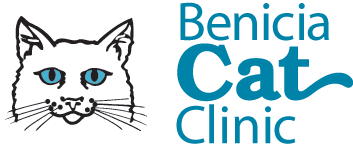Educational Articles
-
Osteoarthritis (OA) is a progressive, degenerative disease that worsens over time. This handout discusses steps you can take to help your cat deal with osteoarthritis (OA) or degenerative joint disease (DJD). In addition to medications that may be prescribed by your veterinarian, other treatment options such as weight loss, exercise, and complementary therapies such as chiropractic and physiotherapy are outlined.
-
An aural hematoma is a collection of blood between the cartilage and skin of the ear flap. It is most likely caused by trauma but can also be due to a bleeding disorder. If an underlying cause is determined such as infection, this needs to be treated as well. Hematomas may eventually resolve on their own, but there is a risk of permanent damage and they are painful, so prompt treatment is recommended.
-
Hepatic encephalopathy is a neurologic condition in cats and dogs that is caused by an underlying liver condition. It can cause lethargy, seizures, problems with balance and coordination, and coma. Common causes, methods to diagnose the condition, and its treatment options are explained in this handout.
-
Hepatic lipidosis, also known as fatty liver syndrome, is unique to cats and is one of the most common liver diseases seen in cats. Usually a cat with hepatic lipidosis has recently gone through a period of anorexia (little or no eating) for 3 to 4 consecutive days. Diagnosis of hepatic lipidosis is made from blood tests that demonstrate poor liver function and/or from a liver biopsy or fine needle aspirate. Hepatic lipidosis is treatable with aggressive nutritional support until a normal appetite returns. Treating the underlying initial cause of the inappetence is also essential for full recovery.
-
Feline viral rhinotracheitis (FVR) is an infectious disease caused by feline herpesvirus type-1. It is a major cause of upper respiratory disease in cats and is the most common cause of conjunctivitis. The typical symptoms of FVR involve the nose, throat, and eyes, and include sneezing, nasal congestion, conjunctivitis, excessive blinking, squinting, and discharges from the eyes and nose that range from clear and watery to thick and purulent (containing yellow/green pus). Treatment consists of supportive care, hydration of the environment, and control of secondary bacterial infections with antibiotics and antibiotic eye medications. An effective vaccine exists and is recommended for all cats.
-
The most common cause of hip dislocation is blunt force trauma such as a fall or an automobile injury. Most cats with a hip dislocation will have severe hind limb lameness and pain, and may not be able to put any weight on the affected limb. A diagnostic X-ray will show the direction of dislocation, and whether a fracture of any part of the hip joint has occurred. In many cases, it is possible to replace the femoral head in the acetabulum by manipulation under general anesthesia. If the femoral head has been successfully replaced and the correct postoperative treatment has been adhered to, it is unlikely that the hip will redislocate.
-
Taking care of a paralyzed pet comes with many challenges. This handout reviews the needs of a paralyzed pet and how an owner can help them at home.
-
Horner's syndrome is a common neurological disorder of the eye and facial muscles and can occur suddenly. Horner's syndrome is caused by dysfunction of the sympathetic nerves of the eyes and surrounding facial muscles. It may be due to an injury such as a bite wound or blunt trauma, a tumor, intervertebral disc disease, or middle or inner ear disease. If an underlying cause can be identified, treatments will target that issue; however, many cases spontaneously recover after some time.
-
Cats are very good at hiding signs of pain, so cat owners need to be very observant to recognize behavior changes that indicate their cat needs help. Some of the most common behavior changes are associated with grooming and litter box habits. This handout describes these and other changes to watch for, as well as advice on how to support your aging cat.
-
Hyperlipidemia refers to elevated levels of lipids (fats) in the bloodstream and can be due to several causes. Often times there are no clinical signs. Hyperlipidemia is confirmed using a 12-18 hours fasting sample. The pet's medical history and a search for an underlying cause is important for its treatment. If no underlying cause is found, your pet will need to start eating a low-fat, high-fiber diets, and may be started on the appropriate medications and supplements.

